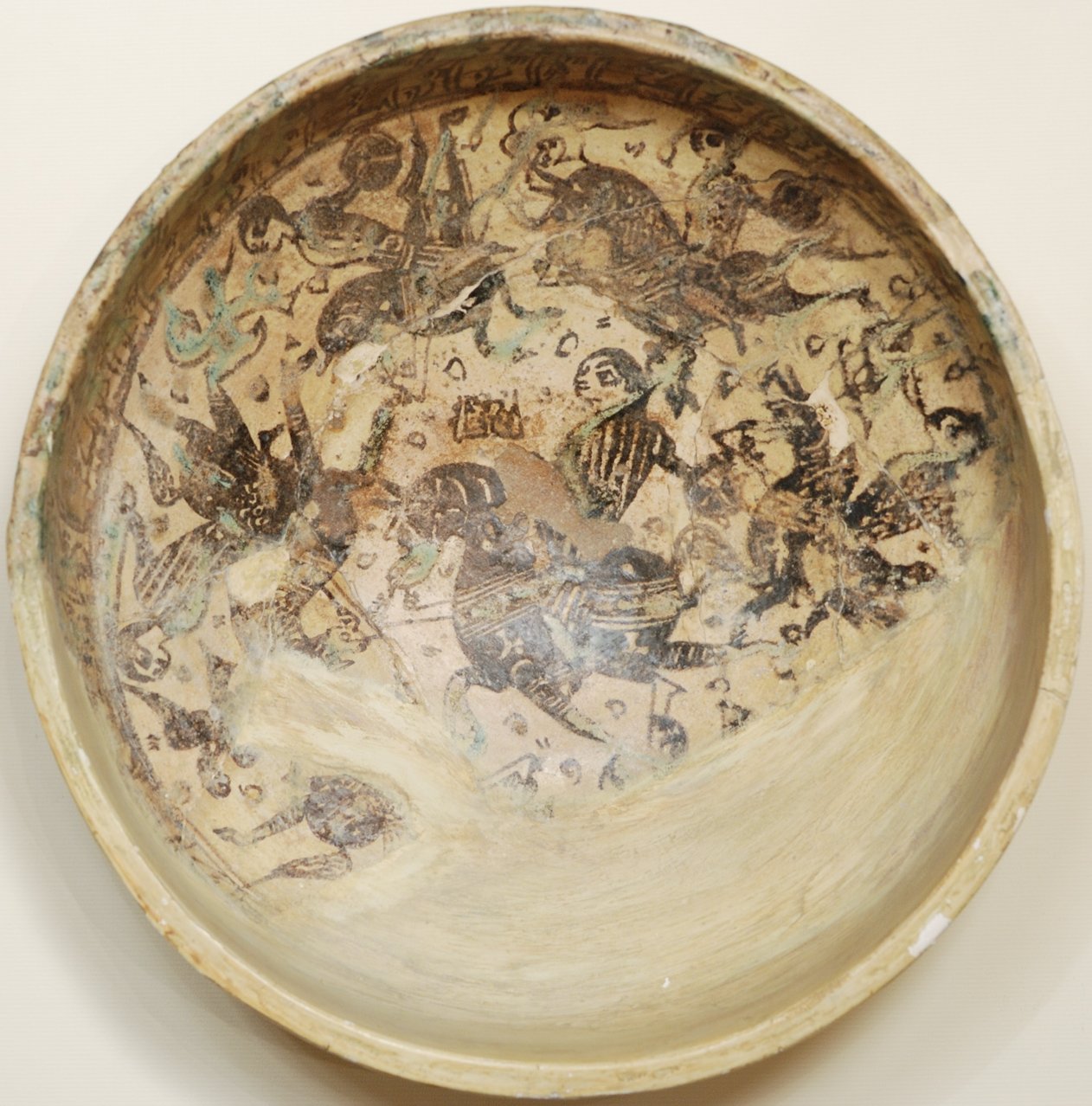
Amazon Audible Gift Memberships
Plate with Battle Scene. Fatimid-Zirid.

A rotated detail of the horseman on the left of this Fatimid-Zirid plate


This bowl comes from Sabra al-Mansuriyya, a city founded by the Fatimids in 947 in the immediate vicinity of Kairouan, Tunisia. On the bottom unfolds a turbulent war scene in which warriors astride galloping horses brandish bucklers in their left hands. The riders are shown in profile, their large wide-open eyes emphasised in black - details that are found on many productions contemporaneous with the piece in Spain and North Africa. They are dressed in close-fitting striped outfits. The horses are drawn with a hasty, highly stylised stroke. Their harnesses and certain parts of their bodies are emphasised by hatching that varies in thickness and slant, a convention found on Ifriqiyan ceramics from the Aghlabid era (800-909) which developed under the Zirids (972-1148). On other ceramic objects found in Sabra al-Mansuriyya horses are frequently depicted with rather naturalistic-looking horsemen astride them. Under the Fatimids a stylised, imaginative figurative art flourished in the Maghreb and later in Egypt.
Museum of Islamic Arts of Raqqada (Kairouan), Tunisia. Qantara